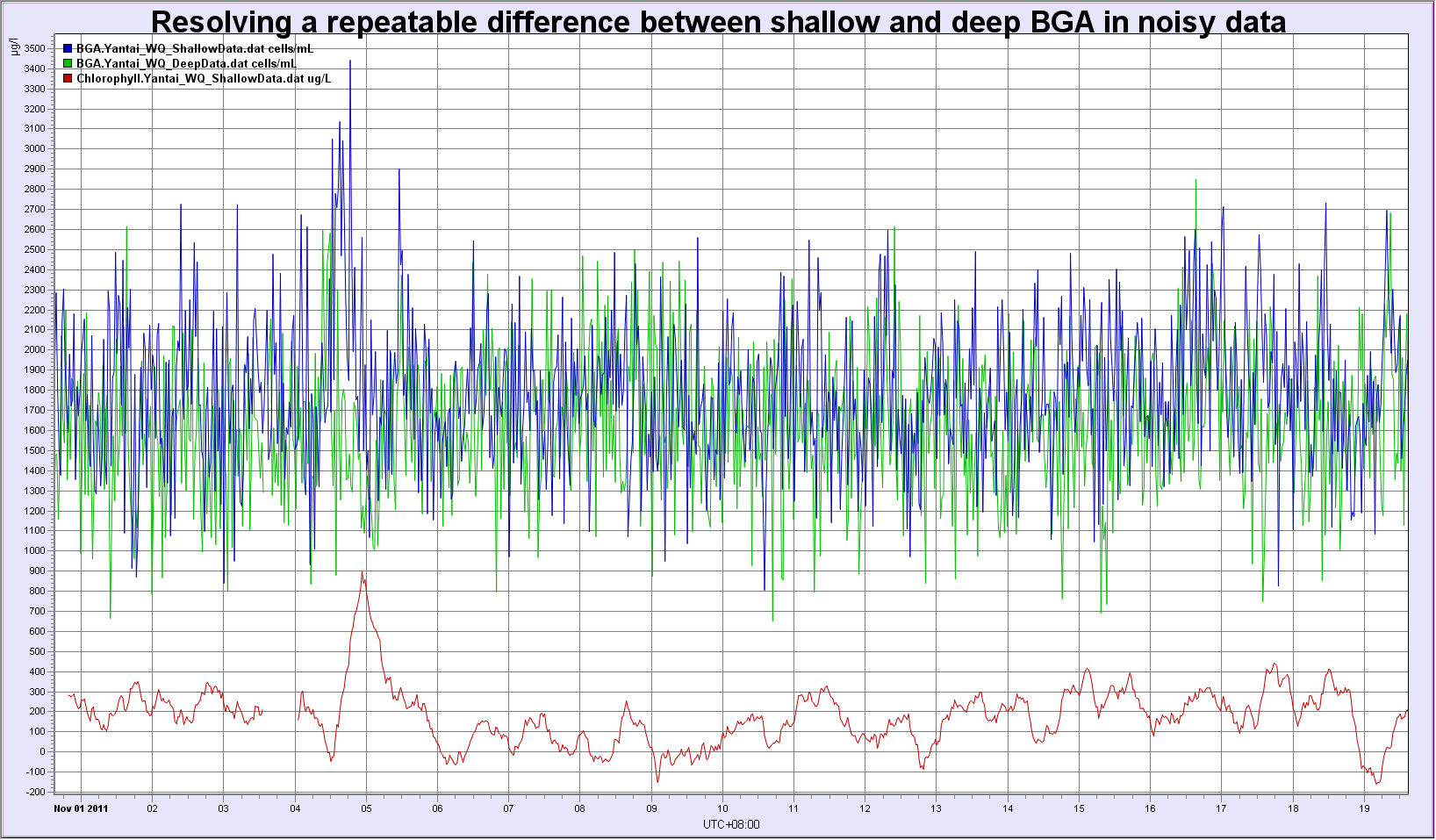Yantai, China, is the pilot location for an innovative Coastal Water Quality monitoring network being jointly developed by Greenspan, Haicheng, the Chinese Academy of Science and the National Marine Agency.
Located on the Bohol Sea, the Yellow River basin is home to almost 350 million people. This large population, heavy industry and being one of the busiest seaports in the world all combine to potentially stress the natural environment. Coupled with extensive mariculture and oil & gas reserves being explored in the sea, the potential for water quality problems are high.
Recognising the risks, proactive steps are being taken to monitor the water quality and detect any issues before the problems spread undetected. Greenspan has delivered a water quality monitoring station that integrates a variety of water quality instruments into a real-time online system.
The station includes in-situ monitoring for:
Physical Parameters (YSI Sonde):
Temperature, Salinity, pH, Dissolved Oxygen, Turbidity
Nutrients (EnviroTech Instruments AutoLAB):
Nitrate, Ammonia, Phosphate using a wet chemistry analyser as Ion Selective Electrodes are ineffective in the marine environment
Biological Activity (YSI Sonde):
Chlorophyll, Blue Green Algae
Pollutants (Turner Designs):
Oil (Crude and Refined)
Traditionally, instruments performing these measurements require frequent maintenance, however the system uses an innovative multi-depth flow through sampling system that keeps the instruments protected on shore, dry in between measurements and in light proof chambers. This solves the problems of biofouling, maintaining instruments without divers and obtaining measurements at multiple depths through the profile while minimizing hardware costs. With the same instrument being used to measure water quality conditions at various depths, instrument variability has been eliminated, providing meaningful depth intercomparison beyond the accuracy of most instruments.
In terms of the measurement system, the Campbell Scientific CR1000 provides all the measurement and control for full remote operation, including various modes such as:
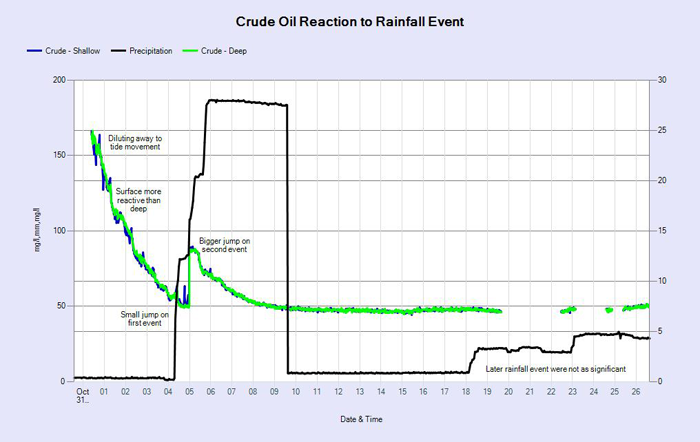
Above: Crude oil reaction to rainfall event
- Low Temperature Shutdown. The site can experience freezing conditions in the coastal waters so to protect the instruments the system is configured with a low temperature shutdown which stops water sampling, to be resumed only when the conditions warm up sufficiently
- Manual Mode. All instruments can be run at higher sampling frequencies or in continuous recording to sample the water conditions during suspicious events
- Onboard Instrument Calibration. The Nutrient analyser is equipped with reagents and standards for automatic calibration. As both the instrument performance and the quality of the reagents/standards may change over time, automatic routines are used to run the standards through the system and use these to automatically correct the measured data for decay and drift. The data logger is programmed with the routines for determining calibration coefficients for each parameter, in real time.
The CR1000 also manages the provision of data to various sources in real time – with a base station running Greenspan’s EnviroSCADA (with native Chinese support) and ENVAULT (www.envault.com.au) both receiving data in real time. Aquatic Informatics Aquarius is also used to process the data for gaps, drift and other corrections before reporting to national agencies.
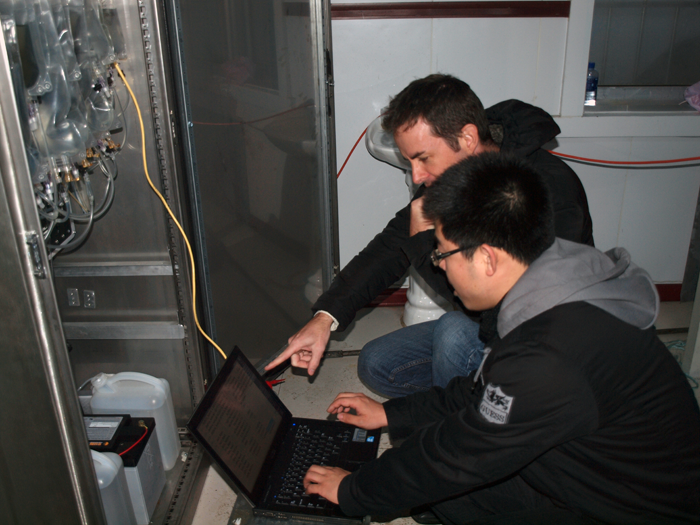
Above: Greenspan and Chinese Academy of Science staff checking system performance.
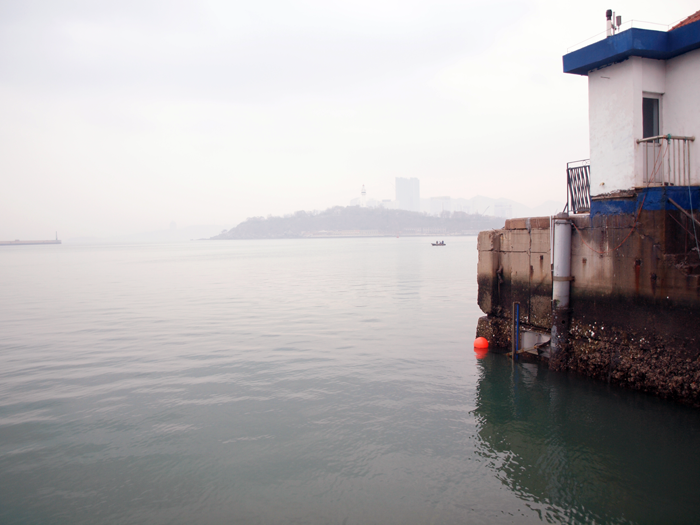
Above: Site inside hut with floating arm visible - Yantai Harbour
From the initial performance of the system, the benefits of the flow through system have been clearly demonstrated. As shown by the photos below, there has been significant growth in the high nutrient and high light warmer waters near the surface, while the instrument inside the flow through system has no visible growth or degradation of the instrument condition.
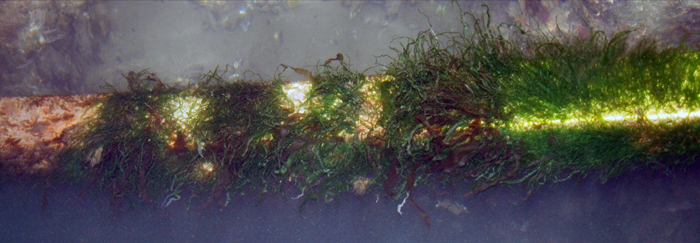
Above: The intake arm with growth after 6 weeks.
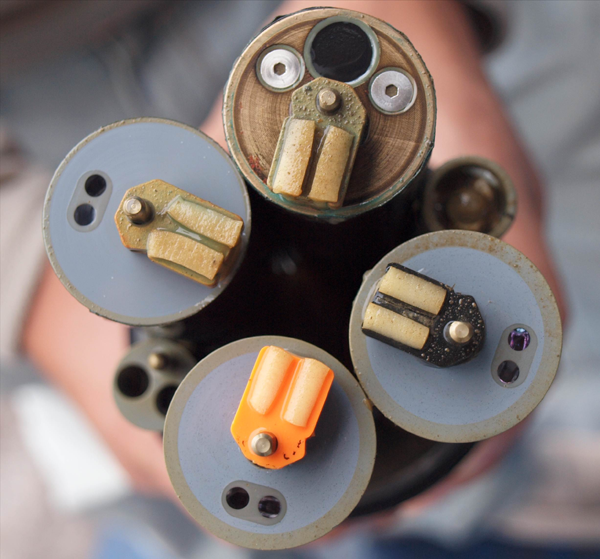
Above: The YSI before cleaning after the same period of time.
The inter-comparison data between two nearby depths (in this case for blue green algae) also demonstrates the ability to detect small but discernible differences in the measurements beyond the accuracy of the instrument, even when the absolute value of the measurement is very small.
For more information on the project, visit Greenspan’s Gallery & Videos http://www.greenspan.com.au
